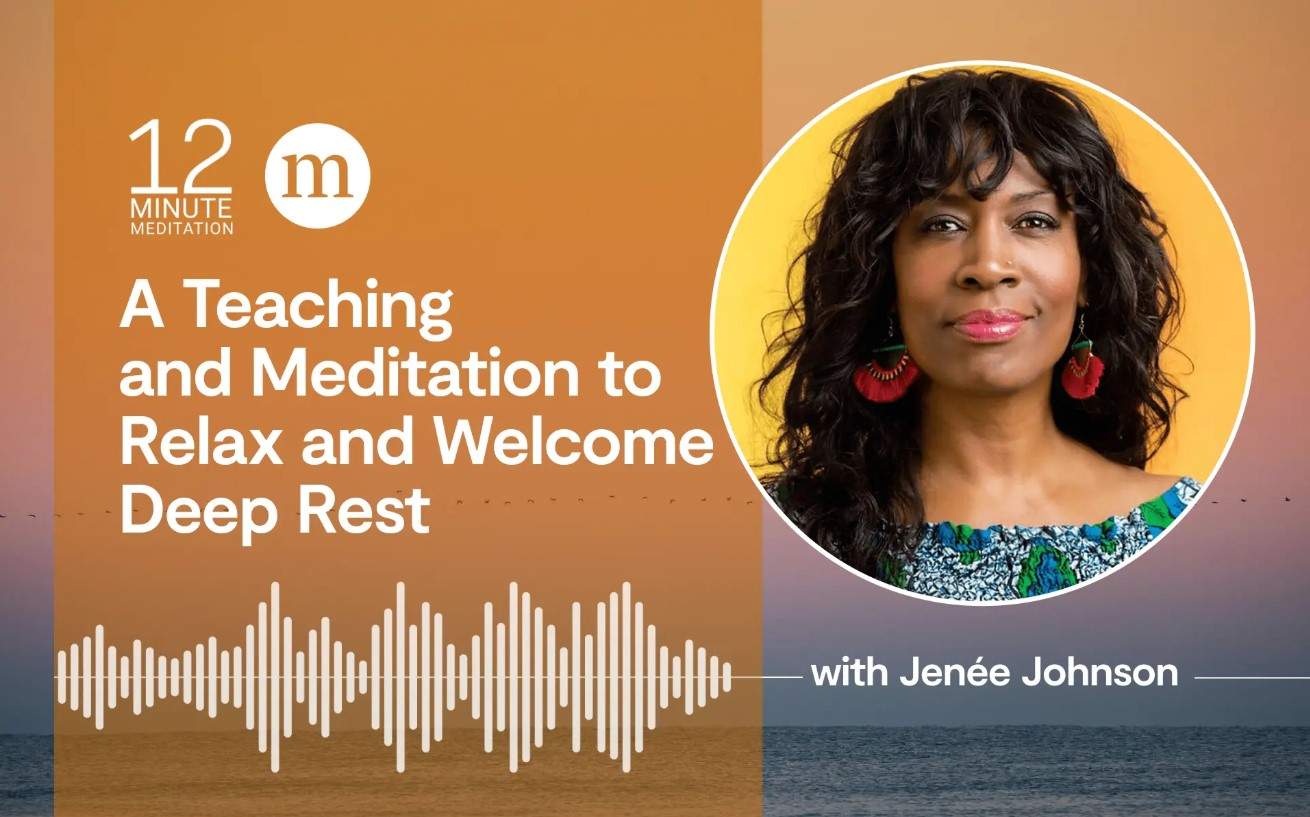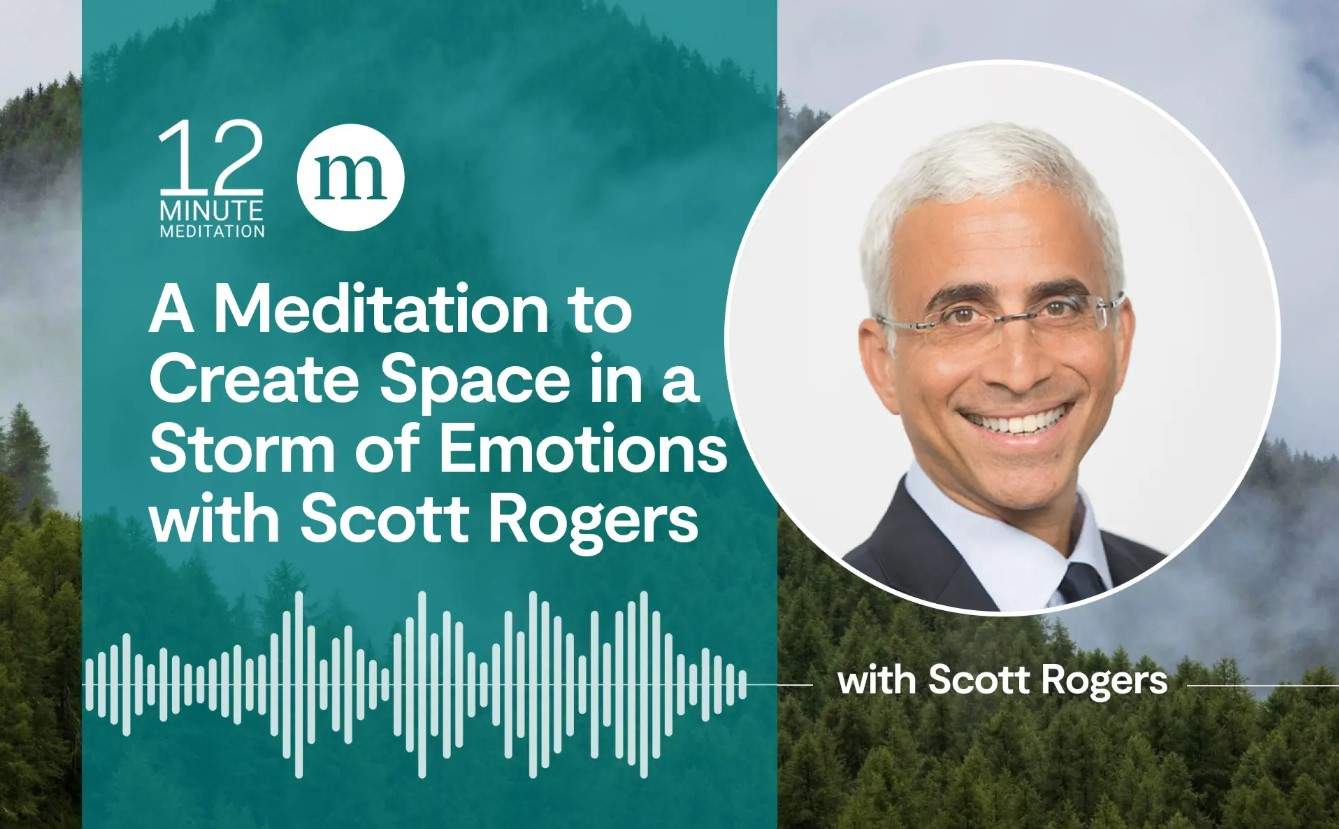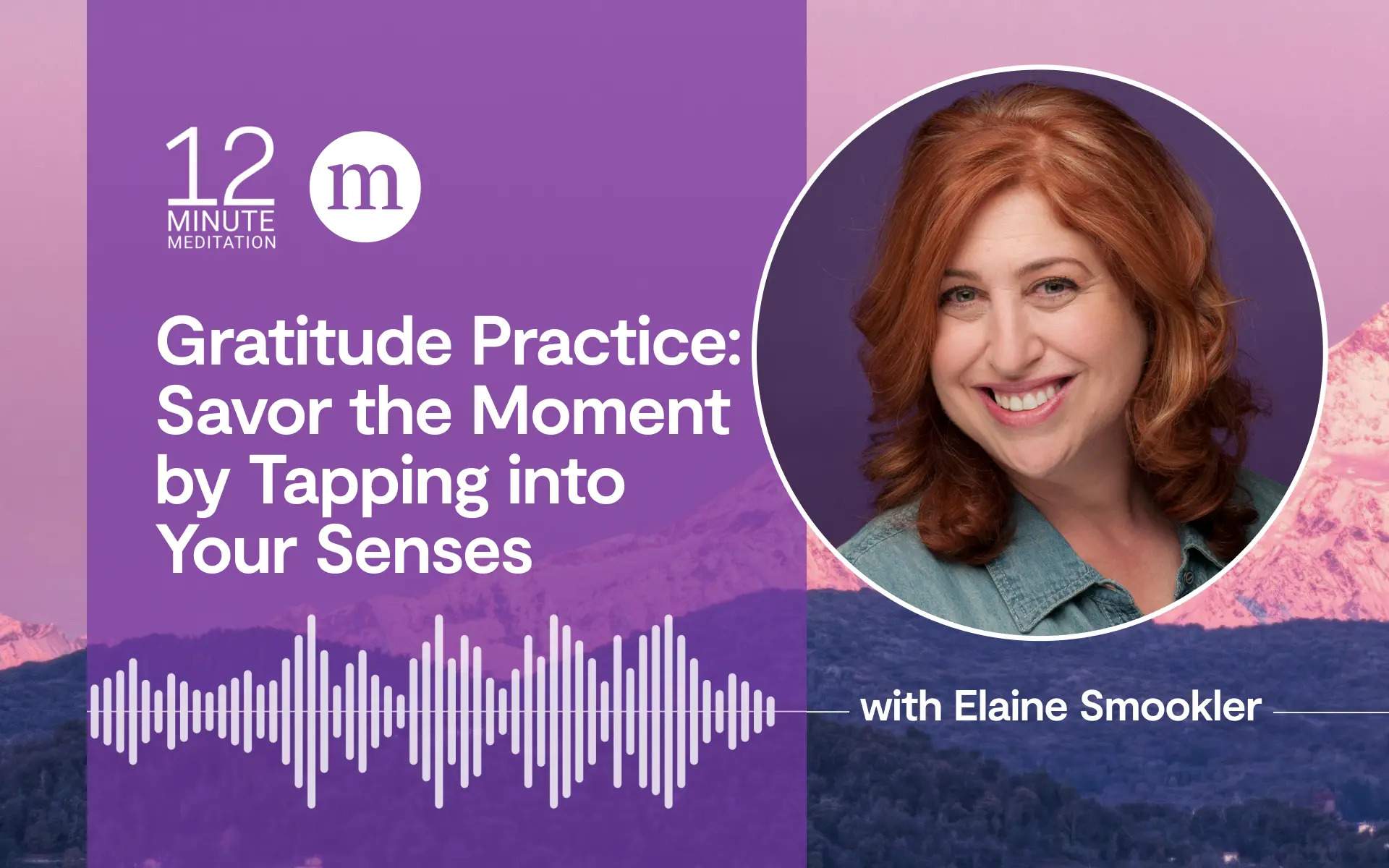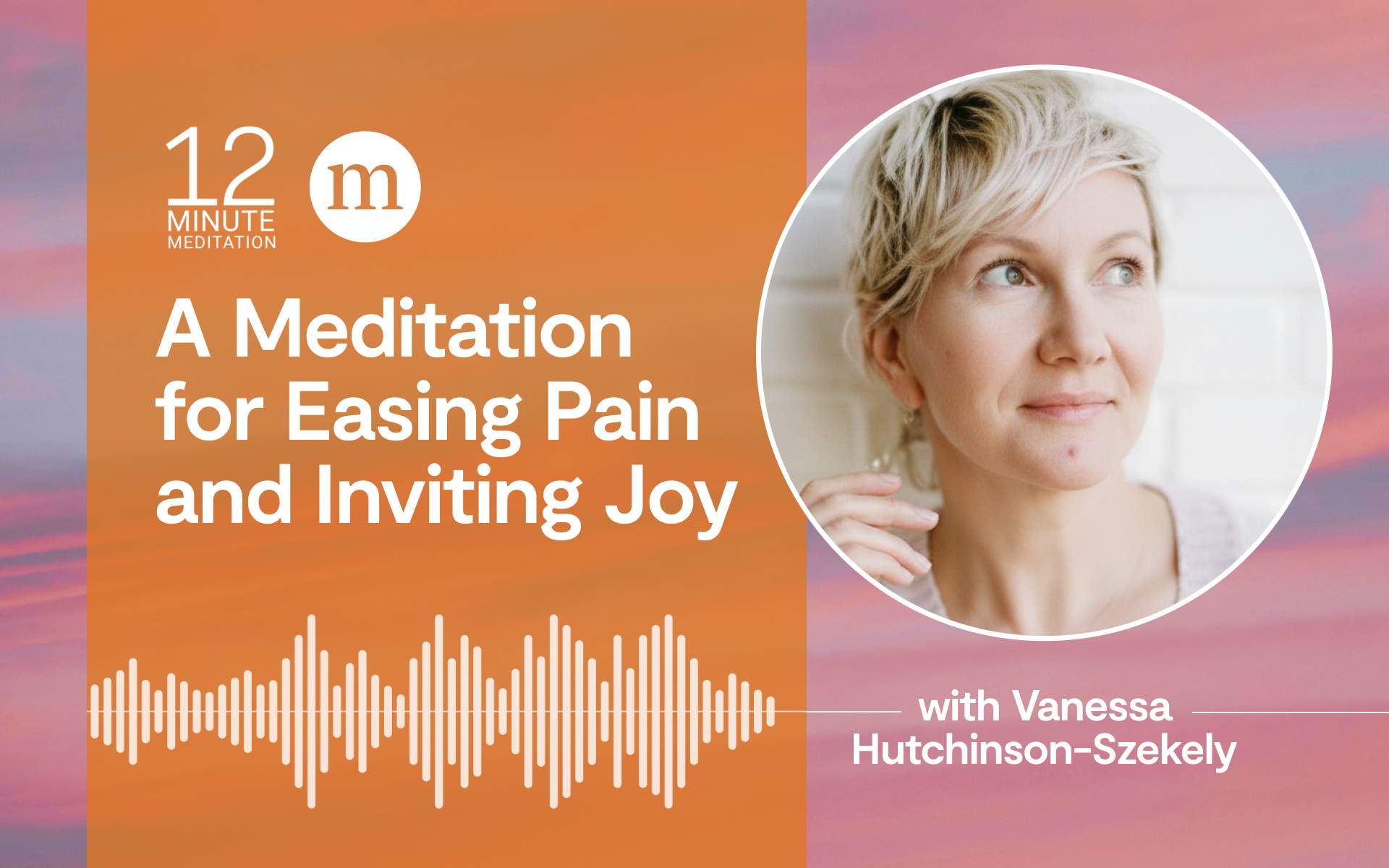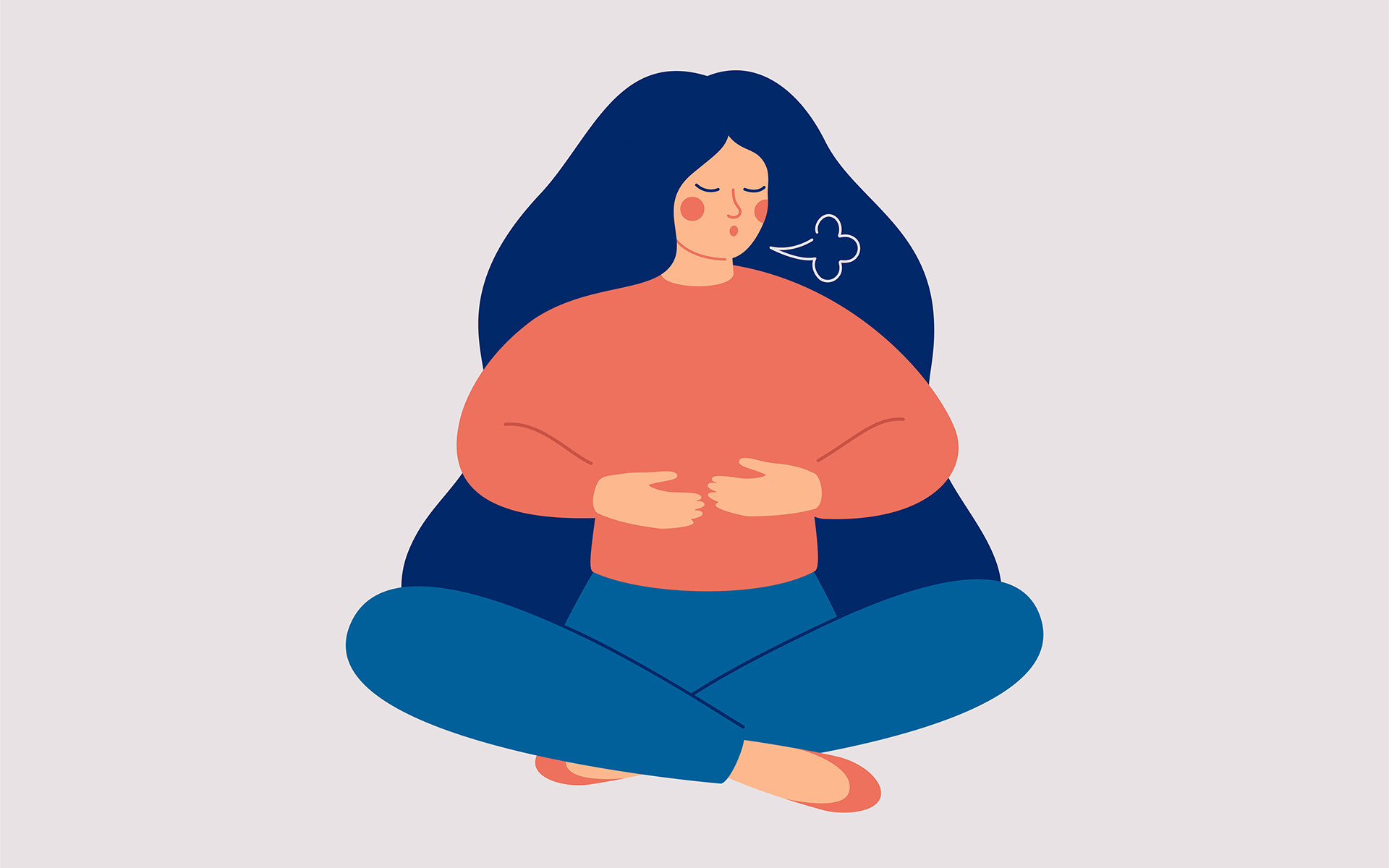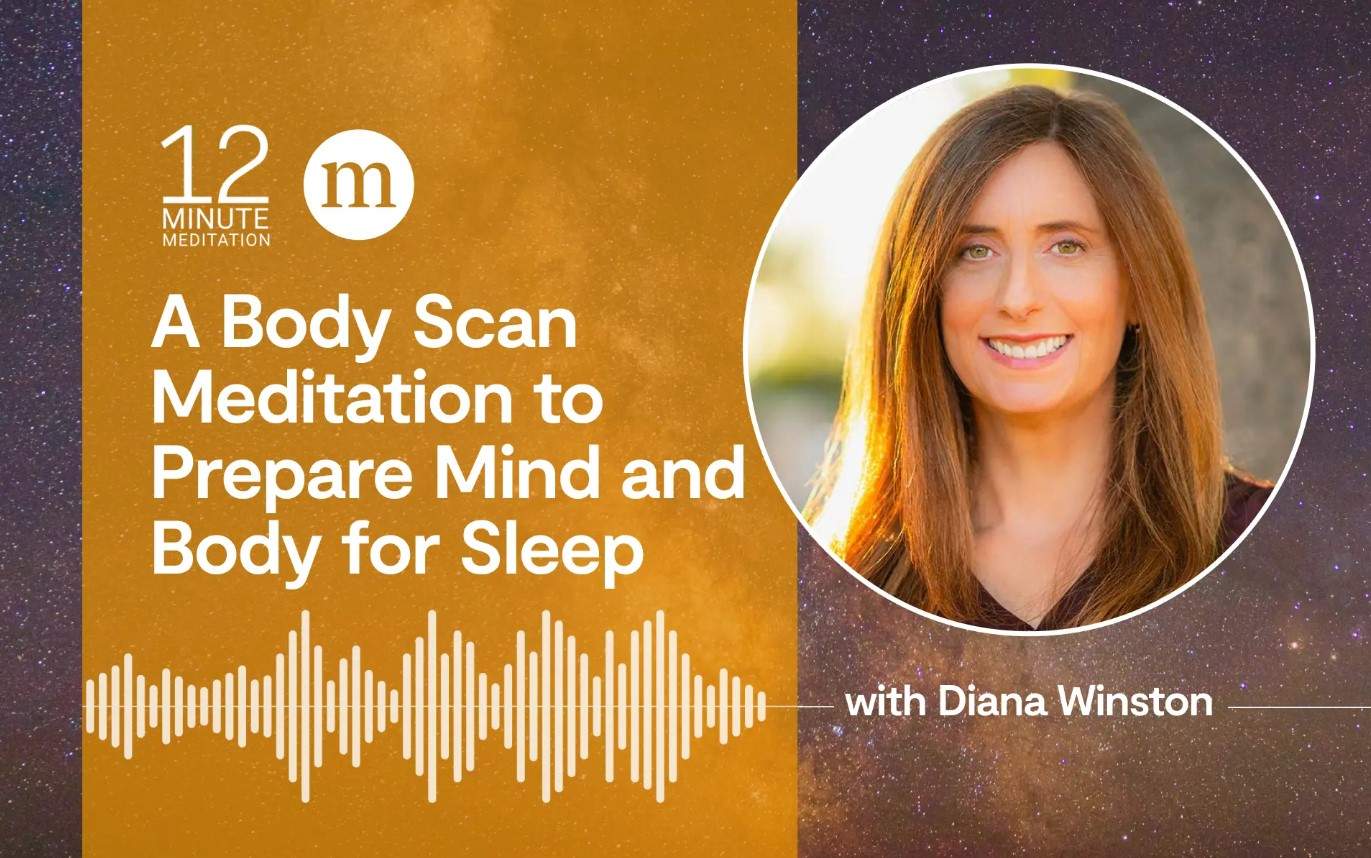Rest isn’t a “reward” for working hard enough. It’s a human need and birthright.
This week’s episode is a little different. We’re not only sharing a guided meditation from mindfulness leader and professional coach Jenée Johnson, but also her teaching on some of the brain science behind relaxation—why it’s essential for our well-being, how it works, and how to incorporate intentional relaxation practices into your daily life.
Jenée Johnson is the founder of the Right Within Experience, where she works to cultivate the experience of inner calm, resilience, self-love, and joy through meditation and mindfulness practices for people of African ancestry. She is also the former program innovation leader at the San Francisco Department of Public Health, Mindfulness, Trauma and Racial Healing.
A Teaching and Meditation to Relax and Welcome Deep Rest
At some point during the day, the body will signal us that it is time to rest, to be still, to withdraw from activity, to be quiet, to take the journey from sound to silence. The mind and body need moments when they can be at ease, free from agitation, pressing, planning, or even celebration.
Stress and trauma and tension play a role in our ability to rest and relax. Therefore, it is so important to do daily “relaxation drills” to help counter the bad effects that stress has on the human body. According to Dr. Frank Staggers Jr., people who do daily relaxation drills remain healthier, have more energy, and think more clearly. This is why it’s important to take 20 minutes, once or twice daily, to deeply relax.
An effective deep relaxation technique is known as quiet sitting or free-floating relaxation. You simply sit quietly for about 20 minutes and allow your mind to float freely until it settles down. Don’t think about anything in particular. Don’t concentrate on anything. Just allow your mind and body to settle down naturally on its own.
An effective deep relaxation technique is known as quiet sitting or free-floating relaxation. You simply sit quietly for about 20 minutes and allow your mind to float freely until it settles down.
In order to deeply relax, you must let thoughts come and go as they please. As you are relaxing, some thoughts may spontaneously rush through your mind. That’s okay. Don’t worry about these thoughts. Don’t exert yourself by trying to block these thoughts. Don’t dwell on these thoughts, either. Just remain passive. Leave the thoughts alone, and the thoughts will gradually fade into the background so you can continue to relax.
The scientific term for the deep state of awake relaxation is the alpha state. This is because the brain calms and produces smooth, harmonious waves called alpha brain waves when it is completely relaxed. The alpha brainwaves have a frequency of eight to 12 cycles per second, whereas arousal or excitation brain waves, called beta brain waves, are much faster at 13 to 40 cycles per second. The alpha state is usually associated with widespread relaxation throughout the entire body and a healthy lowering of the body’s metabolism.
Activities like watching TV, listening to the radio, reading, sewing, or fishing will not hit the alpha deep relaxation state, because these activities still place demands on the brain and keep the brain too busy to completely relax. This means that these activities may get you to the shallow states of relaxation, but they won’t get you into deep states of relaxation. Even sleep will not hit the alpha deep relaxation state, because the brain remains very active during sleep, especially during dreaming.
Even after sleep, you can still be stressed out. Relaxation drills allow your mind and body to hit the deep states of relaxation.
Therefore, while obviously essential for multiple other functions, sleep does not completely relax the brain or counter stress. Even after sleep, you can still be stressed out. Relaxation drills allow your mind and body to hit the deep states of relaxation. So settle back, and let’s try a practice together.
Read and practice the guided meditation script below, pausing after each paragraph. Or listen to the audio practice.
- Sitting in an upright but relaxed position, drop your gaze or close your eyes. Take a deep breath in and an audible exhale out. Breathing in and breathing out, sitting quietly, free floating, invite your body to relax.
- When we simply sit and breathe, we activate the body’s calming response. It allows the brain to display the calm, smooth, harmonious waves called alpha brain waves—like the waves of the ocean, coming in to the shore and rolling back out. Coming in and going out. Breathing in and breathing out. Relax.
- Drop your shoulders, relax the jaw, and unfurl your brow. Allow your mind to float freely until it settles down. Let thoughts come and go as they please.
- Bring your attention back gently to your breath. Don’t exert yourself trying to block thoughts. Just remain passive and remind your body that we’re sitting now, we’re breathing now, we’re relaxing now. Sit quietly, stay with your breath. Like the waves of the ocean, breathing in, breathing out. Let thoughts fade into the background. Relax. To be still, to be quiet, to be at ease. This is the gift of relaxation.
read more
The Top 10 Guided Meditations of 2021
We’re taking a look back at some of our most popular guided meditations from the past year. Read More
12-Minute Meditation: A Grounding Practice to Create Space in a Storm of Emotions
If you feel caught up in difficult emotions and are looking for gentle guidance to find a settled space again, this week’s grounding meditation is just for you. Read More
Peace Begins With Me: A Meditation for When You Feel Overwhelmed By Negative Thoughts
When the world feels uncertain, it’s easy to get overwhelmed by negative thoughts. Rhonda Magee shares a practice to remind us that there is wisdom and compassion in pausing before we act. Read More


